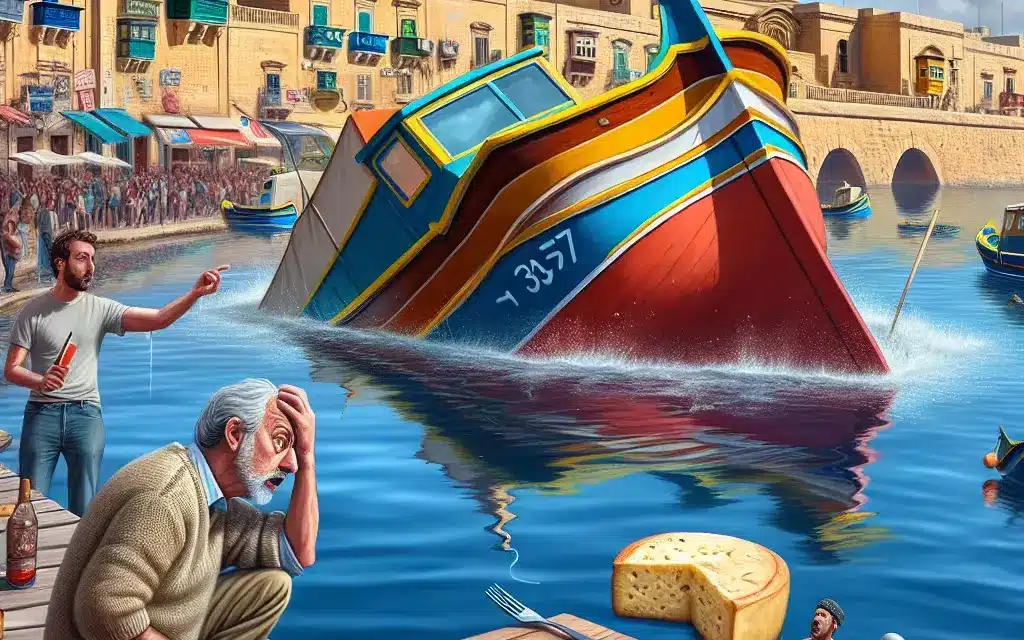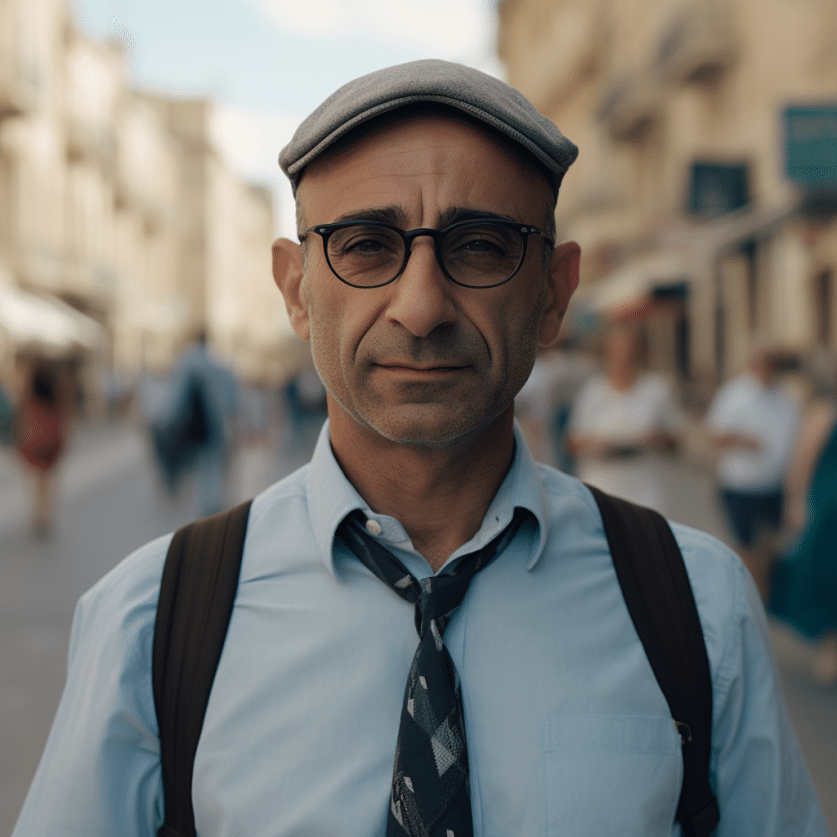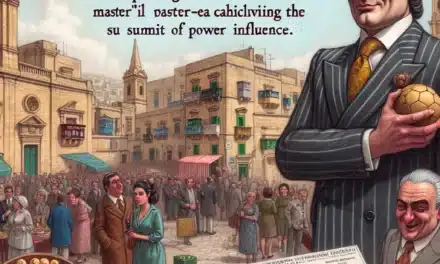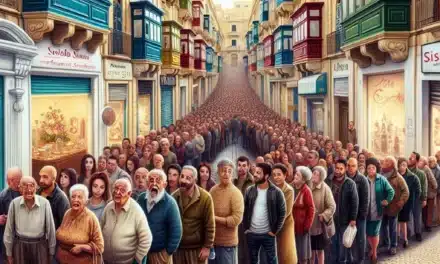The Baffling Case of the Sinking Dgħajsa and the Sliema Street Art Revolution
Chapter One: Where There’s a Will, There’s a Wacky Way
Once upon a time in the bustling seaside town of Sliema, a spearfishing enthusiast named Carmenu, known for his love of sea and ħobż biż-żejt, stumbled upon a puzzling sight. There, bobbing in the clear Mediterranean waters, was his beloved ‘dgħajsa’ (a traditional Maltese fishing boat) slowly submerging into the deep blue. Carmenu scratched his head and muttered, “Kemm jien sfortunat! Now where am I going to store my ġbejniet?”
Carmenu’s dgħajsa had a reputation. Not for its sturdiness or its ability to withstand the might of the sea, but for its colorful hull which was a patchwork of abstract art, making it a floating landmark that captured the attention of expats and locals alike.
Chapter Two: A Sharp Turn Into the Artsy Lane
In a twist that no one, leayyyyyst of all Carmenu, expected, the sinking dgħajsa caught the eye of the enigmatic street artist Zillun, rumored to be the Maltese Banksy. Zillun saw potential where others saw a soggy mess. With a spray can in one hand and a ftira in the other, Zillun set off to turn the streets of Sliema into an open-air gallery, using the dgħajsa’s misfortune as inspiration.
“Mark my words,” Zillun declared to an amused crowd, “this will be the biggest art movement Sliema has ever seen since the spray-paint sales went through the roof during carnival. Pass the bigilla, please.”
Chapter Three: The Rabbit, The Fortress, and the Disappearing Statue
Meanwhile, in the age-old city of Mdina, a statue of a knight had inexplicably vanished, throwing the town’s dignitaries into a tizzy. The only clue left behind was a rabbit-shaped pastry wrapper flapping in the wind. Enter Wistin, a retired detective turned rabbit stew connoisseur, who decided to crack the case with a dash of his culinary expertise.
Wistin, with his ever-present magnifying glass and a tupperware filled with timpana cooked by his eccentric neighbour, insisted, “Someone with a hunger for history and pastizzi is behind this!” Little did he know that the stolen statue had been repurposed as an avant-garde masterpiece at Zillun’s Sliema street exhibit.
Chapter Four: Confessions of an Accidental Art Critic
Just as Wistin was about to chalk it up as another unsolvable mystery, Zillun’s Sliema street art movement exploded into the zeitgeist. Tourists flocked in droves, Instagram influencers posed with duckfaces by murals, and local dhows offered guided tours, with Carmenu – previously distraught – now a celebrity narrator on a floating art tour (on a borrowed boat, of course). It was a social media sensation.
“I was gutted about my dgħajsa,” Carmenu admitted, “but look at me now, hosting boatloads of tourists and explaining postmodernism, uwejja kif mhux hekk!”
Chapter Five: The Art of Connecting Dots
Not wanting to miss out on the action, Wistin took his rabbit stew antics to Sliema. There, he witnessed the eagle-eyed public connecting the dots, marveling at how the missing Mdina statue sat center stage, repainted and repurposed, sandwiched between murals of ftira, lampuki, and scenes from ‘Il-Karnival ta’ Malta’.
The buzz was surreal, reminiscent of the annual Valletta Festival but with fewer fireworks and more contemplative chin-stroking. Wistin, having finally cracked the case, decided to keep mum, thinking to himself, “If I spill the beans… err, the pinto, this cultural jamboree might just sink like Carmenu’s dgħajsa.”
Epilogue: Mela, What’s Next?
And so, the higher powers of Malta called for a meeting to induct Zillun’s ‘Accidental Exhibition’ into the annals of Maltese culture. The sinking of a fishing boat in Sliema had sparked an unexpected art revolution, uniting Mdina’s historical enigma with contemporary flair. As for the statue? It was agreed that it enhanced the cultural tapestry of Malta in its new, vivid colors, surely the knight itself would agree.
Carmenu, resilient as ever, attended art classes and his refurbished ‘dgħajsa’ – equipped with watertight compartments and a fresh coat of artistic flair – was once again seen gliding on the Maltese waves, a beacon of resilience and creativity. And Zillun? Well, Zillun had already moved on, leaving behind a painted silhouette that whispered, “Mela… art is everywhere, if you dare to sink and swim.”
As laughter and applause echoed through the cobbled streets of Sliema and Mdina, the story of the sinking dgħajsa served as a warm reminder that in Malta, kollox is possible with a bit of humor, a splash of color, and the enduring spirit of innovation.







Recent Comments